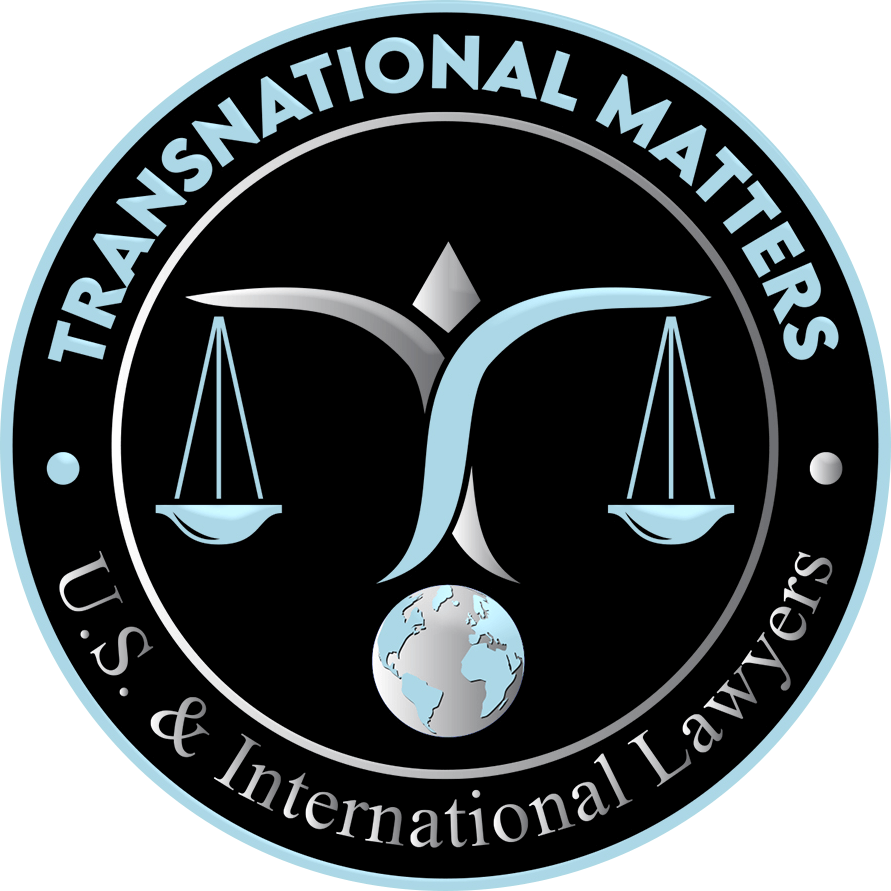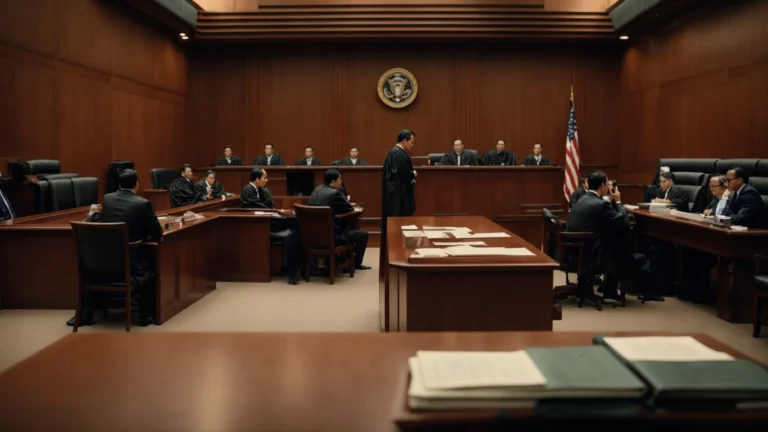International Law and Vicarious Liability: Understanding the Basics
Navigating the intricate terrain of international law reveals the nuanced concept of vicarious liability, a principle rooted as deeply in legal doctrine as it is in the language and literature of justice. Within the ambit of international human rights law, the European Convention on Human Rights casts a long shadow, influencing both corporate behavior and the foreign policy of states. Whether through the lens of state responsibility or the scrutinizing gaze upon multinational corporations, the sway of vicarious liability remains a compelling facet of legal accountability on the global stage. Keep reading to unravel the complexities of how vicarious liability is enforced across borders and the challenges it presents to entities and individuals alike.
Key Takeaways
- Vicarious liability has evolved from an abstract principle to a fundamental component of international law
- International legal frameworks hold states and corporations accountable for transboundary and indirect actions
- Cases like The Barcelona Traction illustrate the evolving applications of state responsibility
- Corporate accountability extends to human rights obligations and ethical conduct beyond mere profitability
- International jurisdiction complexities challenge the enforcement of vicarious liability across borders
Exploring the Roots of Vicarious Liability in International Law

The concept of vicarious liability weaves a complex thread through the tapestry of international law, with its reach extending deep into the historical narrative that underpins current legal doctrine. Scholarly research threads the past to the present, unraveling how this legal responsibility, which one party may bear for the actions of another, evolved from abstract principle to codified norm. The International Law Commission plays a significant role in this development, shaping understandings of accountability within the international community. Tracing the historical evolution of vicarious liability reveals its transformation from an undeveloped notion into a fundamental component of law that holds entities and individuals accountable for the human actions under their influence or control. This examination leads to the various methods by which international law recognizes and implements vicarious liability today.
Tracing Back the Historical Evolution of Vicarious Liability
Tracing the historical evolution of vicarious liability demands acknowledgment of ancient legal frameworks which lay dormant within the roots of European jurisprudence. It was within the bustling law libraries of Portugal where scholars first discerned the rudimentary concepts of what would evolve into modern-day interpretations of this theory.
The interplay between the established doctrines of Portugal and the emerging conflict of laws in the wider European context brought legitimacy to the theory of vicarious us liability. Destined to become a cornerstone of international legal practices, this gradual acceptance unfolded through a series of paradigmatic shifts:
- Early recognition of vicarious liability in domestic systems, emphasizing the need for a responsible party in instances of unlawful conduct.
- A nuanced understanding of mulit-jurisdictional regulation in Portugal laid the groundwork for more advanced conflict of laws analyses.
- The transformation of vicarious responsibility from a merely functional approach to a complex framework underpinning global notions of justice and accountability.
How International Law Recognizes Vicarious Liability
In matters where transgressions spill across borders, the International Court of Justice often finds itself assigning vicarious liability in disputes between nation-states. Invoking both precise citation of international agreements and the less codified, but equally authoritative, customary law, the court sets precedent that ripples through the fabric of global governance.
Environmental arbitration cases, especially those concerning climate change, are increasingly invoking the principles of vicarious liability to hold states or corporations accountable for transboundary harm. These proceedings leverage international consensus and legal traditions to prompt responsible environmental stewardship and adherence to equitable remedies.
The Role of State Responsibility in Vicarious Liability

Within the ambit of international law, the principle of state responsibility holds a unique place, particularly as it pertains to the concept of vicarious liability. This doctrine dictates that under certain conditions, a state may be found liable for the actions of its nationals, a stance that has wide-ranging implications for international relations and jurisprudent understandings. Crucial to this discourse is the judgment of international tribunals which elucidate the contours of state responsibility, employing a meticulous analysis of contract law, customary principles, and legal precedents. Cases like The Barcelona Traction, where Spain was held accountable for actions against shareholders of a Canadian company, and the more recent disputes involving Chile illustrate the evolving applications of state responsibility. Drawing from these varied instances, the forthcoming discussion aims to shed light on the dynamics of when and how states are held vicariously liable for acts not directly their own yet within their purview of influence.
Understanding When States Are Liable for Acts of Nationals
In instances where a government’s failure to regulate the conduct of its nationals leads to international disputes, the state can be held vicariously liable. For example, if the Canadian government does not effectively police industries that cause cross-border environmental damage, it could face legal consequences under international law.
Similarly, the Netherlands could be held responsible in scenarios where Dutch nationals perpetrate acts beyond the regulation of domestic law, leading to grievances by another state. Such circumstances underscore the breadth of national accountability for ensuring their citizens abide by international standards and obligations.
Case Studies Where States Were Held Vicariously Liable
In the realm of legal proceedings, vicarious liability refers to the responsibility that a state may bear for the actions of its employees or agents. See Draft Articles on Responsibility of States for Internationally Wrongful Acts Article 8 (“The conduct of a person or group of persons shall be considered an act of a State under international law if the person or group of persons is in fact acting on the instructions of, or under the direction or control of, that State in carrying out the conduct.”) There have been various notable case studies where states have been held vicariously liable for the actions of individuals acting on behalf of the state. One such instance is where a state employee, such as a police officer or government official, engages in misconduct or negligence while carrying out their duties. In these cases, the state may be found vicariously liable for any harm or damages caused by the actions of its employee.
Furthermore, states can also be held vicariously liable for the actions of independent contractors hired to perform specific tasks on behalf of the state. If an independent contractor causes harm or injury while working under the direction or control of the state, the state may be held accountable for the contractor’s actions. This principle of vicarious liability serves to ensure accountability and justice in situations where individuals suffer harm due to the actions of state employees or contractors.
Understanding the concept of vicarious liability in the context of state responsibility is essential for upholding legal standards and ensuring that individuals are protected from harm caused by those acting on behalf of the state. By examining case studies where states have been held vicariously liable, we can gain insights into the complexities of legal accountability and the importance of ethical conduct in government operations.
In the domain of international investment, a groundbreaking judgment illustrates the ramifications of a sovereign state’s oversight. The dispute centered around an African nation’s omission, which led to substantial losses for foreign investors, a clear dereliction of the state’s custodial role in monitoring investment activities within its borders.
A different scenario unfolded involving a European country found culpable of a delict, not through direct action but rather due to a lack of preventative measures against its citizens’ violations of international norms. This case solidified the principle that possessing knowledge of potential wrongdoings obligates the sovereign state to actively intervene, thereby averting harm to international stakeholders.
Analyzing Corporate Accountability Under International Law

In recent years, the issue of corporate accountability has taken center stage, fueled by a spate of legal actions against multinational corporations for acts that transcend national boundaries. Expert analyses stemming from the University of Cambridge’s renowned commercial law scholars have illuminated the intricate dance of duties that these entities must navigate within the complex arena of international law. Companies domiciled in the United Kingdom, and by extension, others operating on the global scene, confront a tapestry of responsibilities, with Protocol I reiterating a duty to adhere to human rights obligations. This accession of human rights considerations into the sphere of corporate behavior underscores the changing ethos where corporate entities are scrutinized not solely through a prism of profitability but through the broader lens of international legal obligations and ethical conduct.
Instances of Multinational Corporations Facing Legal Actions
The annals of corporate jurisprudence abound with cases where multinationals have confronted the consequences of inadequate due diligence. A poignant chapter in corporate history unfolded when a high-profile energy company was embroiled in litigation, setting a resolute precedent on the paramountcy of rigorous compliance programs across international operations.
In another landmark case, pertaining to immigration, a technology giant faced allegations of labor abuses, prompting legal scrutiny into whether they had sufficiently vetted their supply chain as per the relevant statute. This scrutiny not only charted new territory in the application of international law but also reinforced the critical nature of due diligence in overseeing a multinational’s extensive web of global interactions.
The Influence of International Human Rights on Corporate Behavior
International human rights have become the peremptory norm for shaping corporate conduct, guiding judges in the space where global business practices intersect with ethical mandates. As corporations navigate this evolving landscape, adherence to these human rights principles has become as pivotal as compliance with formal legal statutes.
The statute of the International Court of Justice serves not only as a beacon for state actors but increasingly influences corporate behavior, mitigating prejudice and securing justice. Corporations are now assessed not solely by their financial bottom lines but by their alignment with these universal norms, as adjudicators hold them to international expectations of conduct.
Challenges and Limitations in Enforcing Vicarious Liability Internationally

While the principles of vicarious liability find common ground in jurisdictions worldwide, enforcing them across international borders presents complex challenges. Understanding the crux of these hurdles is essential for legal practitioners and international authorities alike. Jurisdiction remains a formidable obstacle, as demonstrated in cases involving Costa Rica, where the country’s legal stance and obligations under the “foreign relations of the United States” can muddy the clarity of who holds responsibility. Moreover, entities operating internationally must navigate varied legal systems, where tools like Westlaw become indispensable for research and precedent. Yet, despite these impediments, there are instances where the scales tip towards justice, remedying issues such as discrimination and aligning with precedents set by entities as distant as Mauritius. Examining these milestones alongside the shortcomings in applying international laws offers invaluable insights into the efficacy of current legal mechanisms in upholding vicarious liability on a global scale.
Jurisdictional Hurdles in Holding Entities Accountable Across Borders
The intersection of Hinduism’s influence on social dynamics often complicates jurisdictional frameworks, particularly as individuals and entities operate across borders where the nuances of this cultural-legal nexus are not uniformly recognized or understood. As Cambridge University Press publications on sociology indicate, the blending of religious principles into secular law can profoundly affect the international enforcement of vicarious liability, making it challenging to harmonize disparate legal systems.
In the complex arena of international property law, disputes that cross national boundaries frequently grapple with the application of jurisdictional authority. Without a cohesive global system in place, attempts at holding entities accountable for actions that affect foreign assets can be severely hindered, demanding innovative legal approaches and multilateral cooperation that align with social expectations and academic standards suggested by leading institutions like Cambridge University Press.
Success Stories and Failures in Applying International Laws
The complexities of applying international laws are often brought to the forefront when the courts of the European Union successfully navigate the intricate jurisprudence to deliver justice. When the EU judiciary brings attention to cases that establish precedents, it often becomes a primary source for best practices in implementing vicarious liability across diverse legal landscapes.
However, the path towards harmonious application of international justice isn’t without its missteps. High-profile failures, where the judiciary’s interpretation of primary sources leads to conflicting outcomes, have drawn the concerned attention of legal practitioners within and beyond the European Union, highlighting areas in need of reform.
Key Treaties and Conventions Governing Vicarious Liability

International law serves as the guiding compass through which the principle of vicarious liability is interpreted and enforced, shaping legal outcomes that cross borders and political spheres. This framework is composed of a multitude of treaties and conventions, each contributing to the legal fabric that governs how states and entities are held accountable for the actions of others.
The Charter of the United Nations, a cornerstone document in international law, enshrines principles of state responsibility and provides a foundation for understanding vicarious liability in the global political discourse. Its provisions set out the legal responsibilities of states, reflecting the values of international cooperation and rule of law.
In the realm of international politics, vicarious liability often surfaces when state actions or failures extend beyond their own borders, creating implications that necessitate the invocation of treaties to resolve. Such treaties are instrumental in establishing the parameters for legal accountability and are referenced as primary sources when adjudicating cases of vicarious liability.
A cogent login to the vast database of international law reveals that conventions such as The Geneva Conventions and the Vienna Convention on the Law of Treaties play pivotal roles in explicating the nuances of vicarious liability. These conventions, along with others, collectively define how states engage with the concept of indirect responsibility within the international community.
Conclusion
International law intricately shapes the principle of vicarious liability, ensuring states and corporations are held accountable for actions transcending their immediate spheres. Through precedents set by the International Court of Justice and various environmental and investment disputes, vicarious liability has become a key element in upholding global justice and responsibility. Treaties and conventions, such as the Charter of the United Nations and The Geneva Conventions, provide a structured framework for understanding and enforcing this accountability. As international interactions intensify, the doctrine of vicarious liability remains fundamental in maintaining ethical standards and legal order in the international community.


